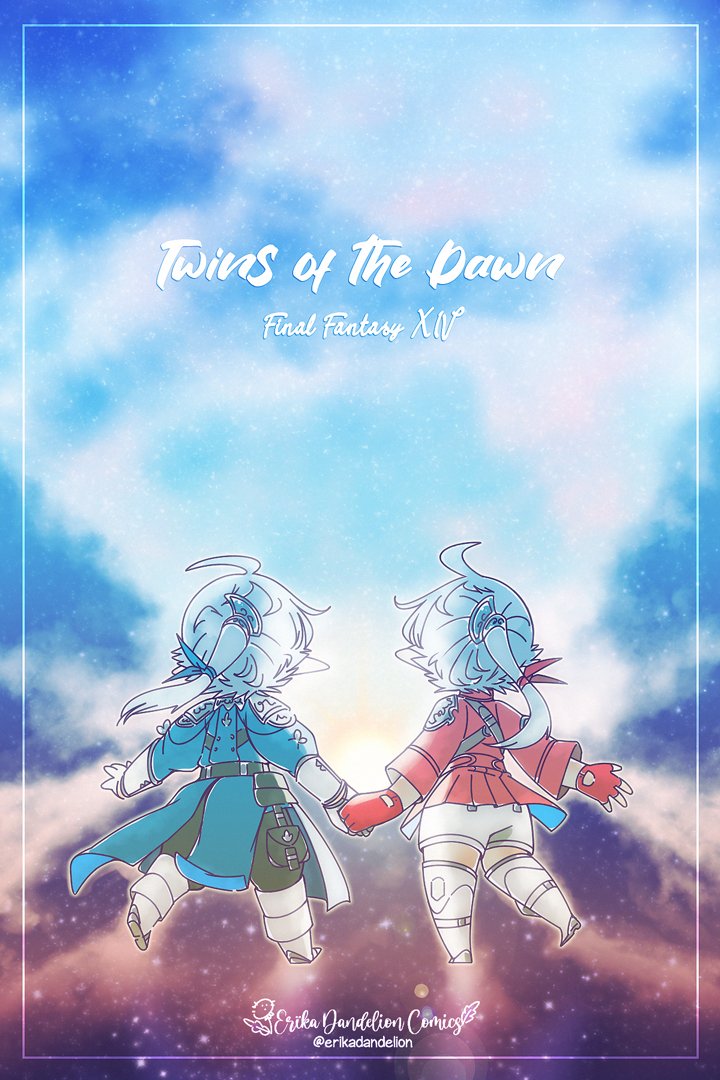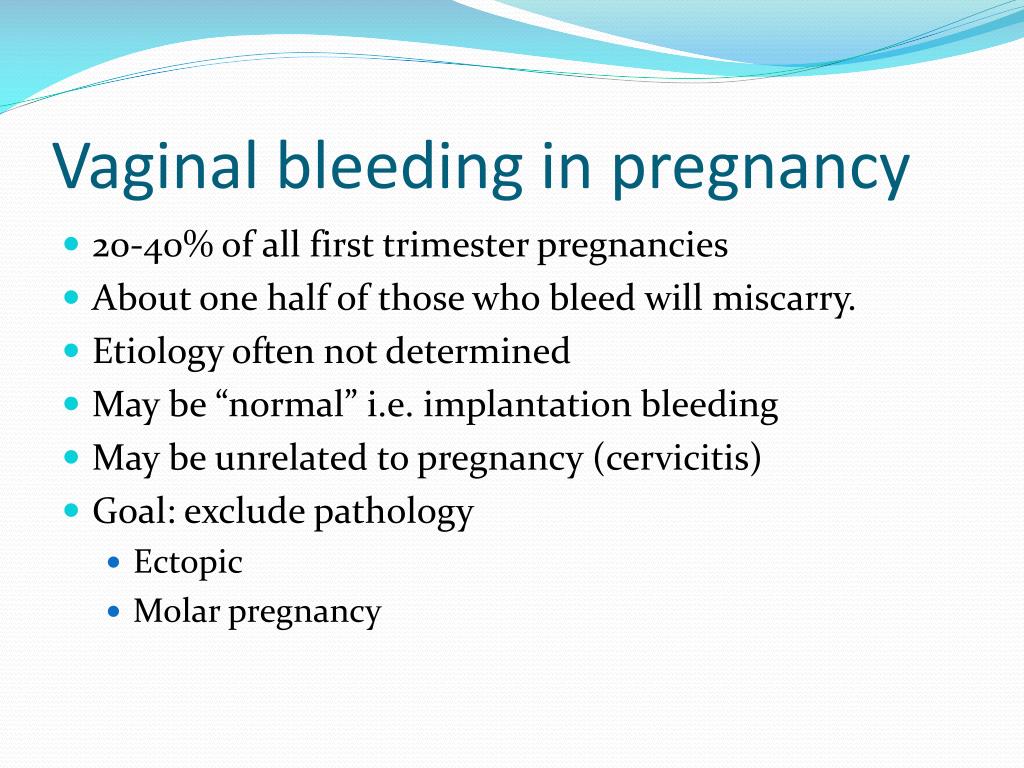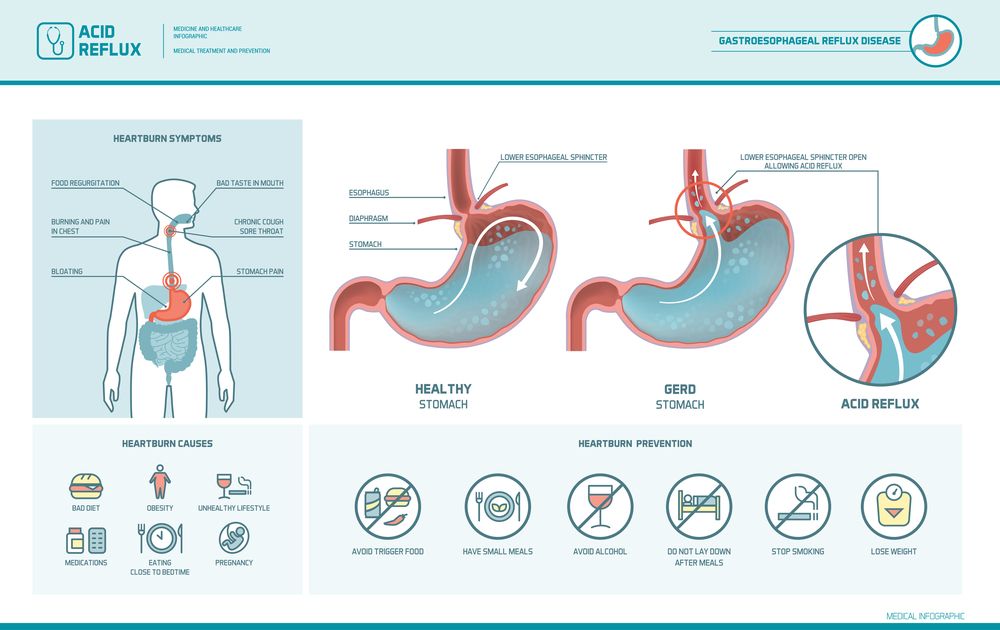Two kinds of twins
Fraternal twins & identical twins
About twins
We usually describe twins according to:
- how many eggs they develop from – 1 or 2
- whether they share a placenta in their mother’s womb.
The main types of twins are fraternal twins and identical twins.
Most twins are born healthy, but a twin pregnancy can mean a higher chance of health complications for you and your babies. If you're pregnant with twins, you and your babies will need extra check-ups.
Fraternal twins
All pregnancies start when a sperm fertilises an egg. This fertilised egg is called a zygote.
Sometimes a woman’s ovaries release 2 eggs, and a separate sperm fertilises each egg. This forms twins. These twins are called fraternal twins, dizygotic twins (meaning two zygotes) or non-identical twins.
During pregnancy, the developing babies get oxygen and food from their mother through the placentas and umbilical cords. Fraternal twins have separate placentas and umbilical cords. The technical name for this is dichorionic.
Fraternal twins can be the same or opposite sex and their genes are as different as any other brother and sister. Often, same-sex fraternal twins look different. For example, they might have different hair or eye colour. Occasionally they look quite similar.
Fraternal twins happen in about 70% of twin births in Australia.
Very rarely, fraternal twins share a placenta. These types of twins are called chimaeric twins.
Identical twins
Sometimes a fertilised egg splits within a few days of conception to produce genetically identical twins. Because these twins come from one zygote, they’re also known as monozygotic. Identical twins are the same sex.
There are 3 types of identical twins.
About one-third of identical twins split soon after fertilisation and form completely separate twins. Like fraternal twins, these twins have separate placentas.
The other two-thirds split after they attach to the wall of the womb. As a result, they share a placenta. The technical name for this is monochorionic.
In a very small number of identical twins, splitting might happen even later. In this case, both twins share an inner sac, called the amnion, in addition to sharing a placenta. The technical name for this is monoamniotic twins. They’re often called MoMo twins.
Identical twins happen in around 1 in 250 pregnancies in Australia.
Although identical twins have the same genes, they don’t always look the same. This is because children’s health and development are shaped not only by genes but also by experiences in the womb and after birth. For example, a twin who gets less blood from a shared placenta might weigh less at birth.
Sharing a placenta or inner sac: why it’s important to know
Sharing a placenta means that twins share a blood supply during pregnancy. Sometimes the blood supply is shared unequally, which can cause health problems for both twins.
Sometimes the blood supply is shared unequally, which can cause health problems for both twins.
Women who are pregnant with twins sharing a placenta need to be checked more often than women who are pregnant with twins with separate placentas. Frequent checks help to pick up any complications early.
Twins sharing an inner sac (monoamniotic) are also at a higher risk of complications during pregnancy because of the chance that their umbilical cords might tangle and cut off their blood supply. These twins are checked even more closely. Medical professionals often recommend that these twins are born at 32-34 weeks. This is earlier than other types of twins, who are generally born at 37-38 weeks.
Medical professionals use ultrasound to work out how many placentas twins have. The earlier the ultrasound, the more accurately it can say how many placentas there are. It gets harder to work out later in pregnancy. After the birth, medical staff will look at the placentas to check what type of twins they are.
Fraternal or identical: why it’s important to know
Same-sex twins with separate placentas can be fraternal or identical. For health reasons, it’s good to know whether your twins are fraternal or identical.
To find out whether twins are identical or fraternal, you can ask for a genetic test after your babies are born. This is called a zygosity test. The test doesn’t hurt and involves collecting a sample of cheek cells by rubbing the inside of your babies’ cheeks with a soft applicator (like a cotton bud). The cost of this test starts at $199 (for both twins) in Australia.
Identical twins are more likely than fraternal twins to get the same illness. If one of a pair of identical twins is diagnosed with a particular disease or health condition, like high blood pressure, the other twin should be checked often for early symptoms.
Because of their genetic make-up, identical twins will always be compatible for organ transplantation, if they ever need it. Fraternal twins are compatible only sometimes.
Fraternal twins are compatible only sometimes.
Other reasons why twins and parents of twins might want to know whether they’re fraternal or identical include:
- trying to work out the chance of having more twins in future pregnancies (only fraternal twins run in families)
- making sure they have the right information about their genetic make-up
- being able to answer questions from family, friends and others
- being involved in twin research
- just being curious!
Some identical twins are mirror twins – for example, their hair parts on opposite sides, they are oppositely handed, or they have birthmarks on opposite sides of their body. In some rare cases, their internal organs can be mirror images of each other. It’s not known why some twins are like this.
In very rare cases, twins can be born physically joined together in different ways. These twins, called conjoined twins (previously called Siamese twins), can happen if the fertilised egg splits quite late after fertilisation.
Triplets (1 in 5000 births) and quadruplets (less than 1 in 100 000 births) can develop as a result of combinations of fraternal and identical twinning. There are no reliable figures for quintuplets (5 babies) and sextuplets (6 babies).
More about twins
In Australia, twins happen in 1 in every 80 births. This means that 1 in 40 Australians is a twin.
The birth rate of identical twins is the same around the world and doesn’t vary with the mother’s age.
In contrast, the birth rate of fraternal twins varies widely across countries and can be influenced by the mother’s age. Women aged over 35 years are the most likely to have fraternal twins, because their ovaries are more likely to release more than one egg at a time.
More twins were born from the 1990s to the mid-2000s. This is because it was common to transfer more than one embryo during in-vitro fertilisation (IVF) treatments. The rate of twins from IVF is now lower, because it’s now usual practice to transfer only a single embryo.
Twins - identical and fraternal
Multiple births are more common than they were in the past, due to the advancing average age of mothers and the associated rise in assisted reproductive techniques, in particular the use of fertility drugs. Twins account for over 90 per cent of multiple births. There are two types of twins – identical (monozygotic) and fraternal (dizygotic).
To form identical twins, one fertilised egg (ovum) splits and develops two babies with exactly the same genetic information. This differs from fraternal twins, where two eggs (ova) are fertilised by two sperm and produce two genetically unique children, who are no more alike than individual siblings born at different times. Twins are more or less equally likely to be female or male. Contrary to popular belief, the incidence of twins doesn’t skip generations.
Factors that increase the odds of having twins
Some women are more likely than others to give birth to twins. The factors that increase the odds include:
The factors that increase the odds include:
- Advancing age of the mother – women in their 30s and 40s have higher levels of the sex hormone oestrogen than younger women, which means that their ovaries are stimulated to produce more than one egg at a time.
- Number of previous pregnancies – the greater the number of pregnancies a woman has already had, the higher her odds of conceiving twins.
- Heredity – a woman is more likely to conceive fraternal twins if she is a fraternal twin, has already had fraternal twins, or has siblings who are fraternal twins.
- Race – Black African women have the highest incidence of twins, while Asian women have the lowest.
- Assisted reproductive techniques – many procedures rely on stimulating the ovaries with fertility drugs to produce eggs and, often, several eggs are released per ovulation.
Fertilisation
Hormones secreted by the ovaries, and a small gland in the brain called the pituitary, control the menstrual cycle. The average cycle is around 28 days. After a menstrual period, rising levels of the hormone oestrogen help to thicken the lining of the womb (the endometrium) and release an egg from one of the ovaries (ovulation).
The average cycle is around 28 days. After a menstrual period, rising levels of the hormone oestrogen help to thicken the lining of the womb (the endometrium) and release an egg from one of the ovaries (ovulation).
If the egg is fertilised on its journey down the fallopian tube, it lodges in the thickened womb lining, starts dividing and evolves into an embryo.
Identical or ‘monozygotic’ twins
Around one in three sets of twins is identical. This occurs because the fertilised egg divides in two while it is still a tiny collection of cells. The self-contained halves then develop into two babies, with exactly the same genetic information.
Twins conceived from one egg and one sperm are called identical or ‘monozygotic’ (one-cell) twins. The biological mechanisms that prompt the single fertilised egg to split in two remain a mystery.
Approximately one quarter of identical twins are mirror images of each other, which means the right side of one child matches the left side of their twin.
Fraternal or ‘dizygotic’ twins
Around two in three sets of twins are fraternal. Two separate eggs (ova) are fertilised by two separate sperm, resulting in fraternal or ‘dizygotic’ (two-cell) twins. These babies will be no more alike than siblings born at separate times. The babies can be either the same sex or different sexes, with the odds roughly equal for each.
The proposed ‘third-twin type’
Some researchers believe there may be a third type of twin, although medical opinion is still divided. It is proposed that the egg splits in two, and each half is then fertilised by a different sperm. This theory is an attempt to explain why some fraternal twins look identical.
The normal length of gestation for a single baby is around 40 weeks. However, gestation for twins, either identical or fraternal, is usually around 38 weeks. This shorter time is due to the increased demands on the mother’s body, and the inability of the babies to receive all the nutrients they need in utero.
Since twins are usually premature, they are more likely to have lower birth weights. Prematurity is associated with increased risk of a number of disorders, including jaundice.
Giving birth to twins
Childbirth can give rise to complications when just one baby is present, so twins present extra potential for difficulties. It is advised that women carrying twins give birth in hospital, rather than at home. The babies can be delivered vaginally, but caesarean section delivery may be considered a better alternative in some circumstances.
Zygosity testing
It is difficult to tell if twins are identical or fraternal at birth. Some identical twins may be born with individual sets of membranes, which may lead to the mistaken assumption that the babies are fraternal.
One way to tell the difference is to have the twins DNA-tested. Identical twins share the same genetic information, while fraternal twins share around half. The test can be done with a sample of cheek cells, collected painlessly. Other tests include blood group examinations.
The test can be done with a sample of cheek cells, collected painlessly. Other tests include blood group examinations.
Where to get help
- Your doctor
- Paediatrician
- Maternity hospital
Things to remember
- Twins account for over 90 per cent of multiple births.
- To form identical or monozygotic twins, one fertilised egg (ovum) splits and develops into two babies with exactly the same genetic information.
- To form fraternal or dizygotic twins, two eggs (ova) are fertilised by two sperm and produce two genetically unique children.
Independent examination of twins. Price. Examples.
Twins are children of one mother, developing during one pregnancy and born as a result of one birth almost simultaneously. There are two main types of twins: homozygous twins (or identical) and heterozygous twins (twins, "twins").
Single-zygote twins are formed from one egg fertilized by one sperm. The fertilized egg divides, and each daughter cell gives rise to a separate organism. Identical twins are always of the same sex and are genetically nearly identical. nine0003
Identical twins are always of the same sex and are genetically nearly identical. nine0003
Twins develop when two eggs are fertilized by two sperm. Naturally, two-zygotic twins have different genotypes. They are no more similar to each other than brothers and sisters, and have about 50% identical genes. Fraternal twins can be of the same or different sexes and will have significant differences in DNA structure.
Both identical and fraternal twins are not only twins, but also triplets, quadruplets, and so on up to 9children.
There are several ways to determine whether identical or fraternal twins are born. Let's briefly list them:
- gender of children. If the children born are bisexual, then in any case they are fraternal twins;
- number of egg shells. The earlier the division of the zygote began, the higher the likelihood that each embryo will receive its own living space. Each embryo will have its own chorion and its own fruit sac. This indicates that the twins are fraternal; nine0014
- the presence of a third circulatory system - these are thin connecting capillaries between the blood vessels of both fetuses.
 This sign is inherent in identical twins;
This sign is inherent in identical twins; - comparison of newborn blood types. In identical twins, the blood type and other specific blood factors are absolutely identical to each other.
The disadvantage of all these types of diagnostics (except sex determination), as many years of experience has shown, is the inability to accurately differentiate fraternal from identical twins. For example, in the case of fraternal twins, fusion of the egg membranes sometimes occurs, and a third circulatory system is often found in fraternal twins. To date, the most reliable way to determine fraternal or identical twins is the genetic examination of the twins. nine0003
So, the genetic examination of twins is a test to determine whether the twins are identical or dizygotic.
If the born twins are of different sexes, then it becomes obvious that the twins are fraternal, since there are no identical twins of different sexes. On the other hand, if the twins born are of the same sex (for example, two boys or two girls), then the question arises whether the twins are identical or dizygotic. To determine this accurately, a genetic examination of the twins is carried out. nine0003
To determine this accurately, a genetic examination of the twins is carried out. nine0003
To pass such an examination, you need to submit the biological material necessary for the study. As a rule, during the genetic examination of twins, swabs of the buccal epithelium are taken from the twins (scraping with a cotton swab from the inside of the cheek). This is the simplest and absolutely painless procedure, which takes about 1 minute and does not require the presence of a medical professional.
How is it established that the obtained biological material belongs to identical or fraternal twins? In genetic expertise, various systems of genetic markers have been developed to identify the individualizing characteristics of an organism. In particular, four systems are distinguished: 1) autosomal polymorphic loci; 2) polymorphic loci of the Y chromosome; 3) polymorphic loci of the X chromosome; 4) nucleotide profile of mitochondrial DNA (mtDNA). nine0003
Which of these systems are suitable for differentiating identical and fraternal twins?
- mtDNA is passed on from a mother to all her children, therefore, both identical and fraternal twins will always have the same mtDNA.
 Therefore, this type of genetic marker is not suitable for differentiating twins;
Therefore, this type of genetic marker is not suitable for differentiating twins; - polymorphic loci of Y chromosomes. The Y chromosome is the sex chromosome that determines the male sex of an organism (Figure 1). As already mentioned, if children of opposite sexes are born, then they are always fraternal twins. But is it possible to identify those born from unizygotic boys by the Y-chromosome? Due to the fact that, firstly, the Y chromosome is transmitted only from father to son, and secondly, in the process of sexual cell division it does not exchange homologous DNA regions (since it does not have a pair), the Y chromosome is transmitted to both children exactly the same. Therefore, it is impossible to differentiate single and dizygotic twins according to the Y chromosome; nine0014
- polymorphic loci of the X chromosome. The X chromosome is the sex chromosome that determines the female sex of an organism. Female cells have two X chromosomes, while male cells have only one.
 The X chromosome is inherited from both the father and the mother (Figure 1). According to the X chromosome of the father, it is impossible to differentiate single and dizygotic girls, due to the fact that during the process of sexual division of male cells there is no exchange of homologous DNA sections in the X chromosome (since it does not have a pair), and the X chromosome is inherited by children exactly the same. On the other hand, the mother's two X chromosomes recombine with each other through the process of sexual cell division, and, in the case of fraternal twins, the site exchange process can be found in the maternal X chromosomes. In practice, this type of analysis is not used, firstly, because it is necessary to study a large number of genetic markers of the X chromosome, and secondly, there is a simpler method of differentiation based on the analysis of autosomal polymorphic loci; nine0014
The X chromosome is inherited from both the father and the mother (Figure 1). According to the X chromosome of the father, it is impossible to differentiate single and dizygotic girls, due to the fact that during the process of sexual division of male cells there is no exchange of homologous DNA sections in the X chromosome (since it does not have a pair), and the X chromosome is inherited by children exactly the same. On the other hand, the mother's two X chromosomes recombine with each other through the process of sexual cell division, and, in the case of fraternal twins, the site exchange process can be found in the maternal X chromosomes. In practice, this type of analysis is not used, firstly, because it is necessary to study a large number of genetic markers of the X chromosome, and secondly, there is a simpler method of differentiation based on the analysis of autosomal polymorphic loci; nine0014
Figure 1. Transfer of sex chromosomes from parents to identical and dizygotic children. Different colors depict different loci.
Table 1. Identical and fraternal twins have a number of features that distinguish them both from others and from each other.
| Feature of interest | Identical twins | Fraternal twins |
|---|---|---|
| Sperm count | nine0059 OneTwo | |
| Number of eggs involved | One | Two |
| Floor | Boys only or girls only | Boys, girls and a boy with a girl can be born |
| Autosomal polymorphic loci | Identical for twins | Different in twins |
| mtDNA nucleotide profile | Same copies of mtDNA in both twins | Same copies of mtDNA in both twins |
| Y chromosome polymorphic loci | Identical for twins | Identical for twins |
| X-chromosome polymorphic loci | Identical for twins | Different maternal X chromosomes in twins |
- autosomal polymorphic loci.
 Autosomes are paired chromosomes that are the same in the male and female body. In other words, these are all chromosomes, except for the sex chromosomes (X- and Y-chromosomes). In the process of sexual cell division (meiosis), chromosomes form pairs and exchange homologous regions (recombine). In the process of recombination, chromosomes exchange allelic variants of polymorphic loci, that is, gene variants. It is the recombined chromosomes with "shuffled" alleles that make up the genetic material of germ cells. Moreover, each sex cell has its own unique set of genes ("deck of cards" in this case consists of 25,000 genes). Thus, nature provides material for natural selection and creates even in a large family children who are not similar to each other. Since identical twins are formed from one egg fertilized by one sperm, the genetic material is identical. Fraternal twins are formed from two eggs and two sperm, so their genetic material is very different from each other. nine0014
Autosomes are paired chromosomes that are the same in the male and female body. In other words, these are all chromosomes, except for the sex chromosomes (X- and Y-chromosomes). In the process of sexual cell division (meiosis), chromosomes form pairs and exchange homologous regions (recombine). In the process of recombination, chromosomes exchange allelic variants of polymorphic loci, that is, gene variants. It is the recombined chromosomes with "shuffled" alleles that make up the genetic material of germ cells. Moreover, each sex cell has its own unique set of genes ("deck of cards" in this case consists of 25,000 genes). Thus, nature provides material for natural selection and creates even in a large family children who are not similar to each other. Since identical twins are formed from one egg fertilized by one sperm, the genetic material is identical. Fraternal twins are formed from two eggs and two sperm, so their genetic material is very different from each other. nine0014
As mentioned above, when genetic examination of twins is carried out, the only system of genetic markers is autosomal polymorphic DNA loci. When analyzed, all polymorphic loci of identical twins show the same alleles, while alleles of identical twins will be different (Figure 2).
When analyzed, all polymorphic loci of identical twins show the same alleles, while alleles of identical twins will be different (Figure 2).
Figure 2. The principle of determining identical and fraternal twins. Different colors and letters show different alleles of the same locus. nine0003
Therefore, the task of genetic examination of twins is to analyze the allelic variants of polymorphic loci and determine whether they are the same (homozygous) or different (heterozygous). To do this, biological material sent for genetic examination is subjected to several stages of analysis:
- extraction of DNA from biological material. The process of extracting DNA from cells is very important and time-consuming. At this stage, it is critical that DNA molecules from the environment do not get into the test tube with biological material (for example, house dust includes dead and exfoliated skin cells and hair particles). Therefore, DNA extraction takes place in especially clean rooms and in special laboratory boxes; nine0014
- , at the next stage of the analysis, the number of studied autosomal polymorphic loci increases with the simultaneous inclusion of a fluorescent label in each copy of the locus.
 This is done using the polymerase chain reaction (PCR) method. Today, the PCR reaction is used in a variety of molecular biotechnological methods: for example, DNA sequencing, cloning, directed mutagenesis, diagnosis of hereditary diseases, in all of the above methods for analyzing genetic markers, and so on. At 19In 83, this reaction was invented by the American biochemist Kary Mullis, for which he was awarded the Nobel Prize in 1993;
This is done using the polymerase chain reaction (PCR) method. Today, the PCR reaction is used in a variety of molecular biotechnological methods: for example, DNA sequencing, cloning, directed mutagenesis, diagnosis of hereditary diseases, in all of the above methods for analyzing genetic markers, and so on. At 19In 83, this reaction was invented by the American biochemist Kary Mullis, for which he was awarded the Nobel Prize in 1993; - at the final stage, the resulting mixture of DNA molecules is analyzed. To do this, molecules of different lengths are separated in a porous agarose gel under the action of an electric field. Separated DNA fragments labeled with a fluorescent label are read by a laser, and their length is automatically entered into a computer. Comparing the obtained results with each other, as well as with a standard genetic marker, the expert geneticist determines the degree of their agreement or difference. This point in the analysis of the coincidence or mismatch of DNA allelic profiles is carried out in accordance with Art.
 3.4 Guidelines of the Ministry of Health of the Russian Federation No. 98/253 dated January 19, 1999 "The use of individualizing systems based on amplified DNA fragment length polymorphism (AFLP) in forensic medical examination of personality identification and establishing kinship."
3.4 Guidelines of the Ministry of Health of the Russian Federation No. 98/253 dated January 19, 1999 "The use of individualizing systems based on amplified DNA fragment length polymorphism (AFLP) in forensic medical examination of personality identification and establishing kinship."
The accuracy of the results of the genetic examination of twins, confirming the identity, is 99.99%, refuting - 100%.
Regulatory documents that determine the procedure for conducting a genetic examination of twins in the Russian Federation:
- Federal Law of May 31, 2001 No. 73-FZ "On State Forensic Activities in the Russian Federation";
- Order of the Ministry of Health and Social Development of the Russian Federation No. 346n dated May 12, 2010 "On approval of the Procedure for organizing and conducting forensic medical examinations";
- Guidelines of the Ministry of Health of the Russian Federation No. 98/253 dated January 19, 1999 "The use of individualizing systems based on amplified DNA fragment length polymorphism (AFLP) in forensic medical examination of personality identification and establishing kinship.
 " nine0014
" nine0014
According to the Decree of the Plenum of the Supreme Court of the Russian Federation of December 21, 2010 N 28 "On judicial expertise in criminal cases" expertise in a criminal case can be carried out either by the state an expert institution, or a non-profit organization established in accordance with the Civil Code of the Russian Federation and the Federal Law "On non-profit organizations", carrying out forensic activities in accordance with the statutes adopted by them. nine0003
Commercial organizations and laboratories, individual entrepreneurs, educational institutions, as well as non-profit organizations for which expert activity is not statutory, do not have the right conduct a criminal investigation. Expertise prepared by these organizations within the framework of criminal process, may be recognized as inadmissible evidence, i.e. evidence obtained from violation of the requirements of the procedural law.
Inadmissible evidence may not be used in the process of proof, including examination or be announced at the court session, and are subject to exclusion from the materials of the criminal case. nine0003
nine0003
Since ANO "Forensic Expert" is an autonomous non-profit organization , and conducting judicial expertise is its main statutory activity (see section "Documents organization"), then it has the right to conduct examinations, including in criminal cases.
There are 2 types of people according to the sign of the Zodiac. Which one are you? 07 Nov, 2018 04:02 43126 Astrology, Signs of the zodiac
18+
Incredible facts
Did you know that there are two types of zodiac signs?
Each zodiac sign has unique personality traits. This does not mean that all people of a certain sign will have all these features, but most likely most of them will be present.
However, there are people who believe that they do not have the characteristic features of the signs of the Zodiac, and there is a reason for this.
Read also: Were you born at the intersection of the signs of the Zodiac? Here's what it means.
Your zodiac sign, depending on your birth chart, can manifest itself in completely different ways. You can call them the first and second type. At the same time, the first type is characterized by features that can be considered typical for representatives of this zodiacal constellation, while the 2nd type manifests itself a little differently.
So, what type are you? nine0156
Aries
Aries type 1: Loud, aggressive, wins any argument
The first type of Aries is a born leader, a person who leads and is ready to face any situation head on. Such a person never gives up his positions and will always be able to protect you in any dispute.
Aries of the first type are absolutely straightforward and will not use tricks or manipulate you in any way. He simply does not need it: he gets everything he wants by acting directly. And most of the time he's right. nine0003
They are the loudest people in any company, the most aggressive in their desires, and some of the most productive people you will ever meet.
Aries type 2: Cheerful and charming, but will still win in any dispute
Aries of the second type is as straightforward as the first, but tries to achieve everything gracefully. And all because this type is not so aggressive. Instead of breaking through walls, they win over others with their smile and charismatic personality that helps them get what they want. nine0003
These are some of the biggest optimists, but don't underestimate them. They are just as capable of getting their way as the Aries of the first type, just by doing it in a more friendly manner.
Taurus
Taurus type 1: Calm and a little lazy, good cook
Taurus of both types are people whose hugs will warm any person, and who will always be there if needed. However, this is also the type of people who tend to go with the flow and take any situation calmly. nine0003
Although the first type of Taurus knows how to have fun in a big company, they are most comfortable in a more relaxed environment.
In addition, representatives of this zodiac sign are the best at cooking, they know how to take care of themselves, but they are quite lazy.
Taurus Type 2: The Embodiment of Beauty
The second type of Taurus, as a rule, is a little more spoiled, simply because they have excellent external data. For every homebody Taurus, there is always another Taurus who always looks stunning and walks around in the most fashionable and expensive clothes. nine0003
Such Taurus have an innate sense of style and are a role model for many people.
Unlike the first more calm and introverted type of Taurus, the second feels great in a large group of people and is always ready to indulge his desires.
Gemini
Gemini type 1: Chameleons with a developed gift of eloquence
This type of Gemini is great at handling any social situation and has good communication skills. Around them there is always a group of like-minded people. These are real extroverts, although it cannot be said that they do not have any complexes. nine0003
Around them there is always a group of like-minded people. These are real extroverts, although it cannot be said that they do not have any complexes. nine0003
A typical representative of the first type of Gemini can fit into any situation, because he is able to embody several personalities at once. They are ideal mediators who perfectly fulfill this role in everyday life.
Gemini type 2: Mood swingers who need hugs
The second type of Gemini is also sociable and gets along well with people, but it is more difficult to adapt. Many Geminis of this type suffer from social phobia and mood swings. While the first type of Gemini uses their duplicity, turning the face that the situation requires, the second type of duality manifests itself in their mood. nine0003
You never know how a Type 2 Gemini will react in a given situation, because it's mostly a matter of chance. Also, this type is more of an introvert due to problems with low self-esteem, and often needs strong hugs.
Cancer
Cancer type 1: Caring and emotional, a little insecure
A typical representative of Cancer is the embodiment of a caring friend. He will always remind you to put on a warm hat or cook you dinner. Cancers of the first type can be a little insecure because they do not hide their feelings. nine0003
They are very emotional, and others often feel that they need protection, although Cancers are much stronger than they seem.
Cancers of this type are ready for anything for the sake of loved ones and their family, being also great friends. These are people with a wide open soul who can easily cry.
Cancer type 2: Never cried in your life, make you cry in no time
Type 2 cancer is also emotional, but would rather die than cry in front of everyone. He is not inclined to overprotect others and can be even cruel somewhere. He won't pity you when you cry, but rather give you the magic kick he thinks you need. nine0003
nine0003
They'd rather make you cry than shed a single tear. With this type of Cancer, your relationship will not be easy. But do not consider them callous. They just don't want people to make the wrong choice. Their kindness is often hidden under a more severe shell.
Lev
Leo Type 1: See themselves as the center of the universe, don't get enough attention
The first type of Leo is always looking for his place under the Sun and is ready for anything to get his way. He wants to shine on the stage, to be the center of the Universe and has a bright and attractive personality enough for this. nine0003
They can not be called notorious egoists, but they know their own worth and hope that others understand this too.
In general, Lions of the first type live in the hope of reaching their high point and are actively working towards this goal. To other more reserved signs of the Zodiac, Type 1 Leos can be a little tiresome, but others adore them.
Leo type 2: Actually, they are the center of the universe, but they want to be left alone
The second type of Leo is, in fact, the opposite of the first type. If the 1st type is waiting for its finest hour, which is still out of reach, the second is the real center of the Universe, the king of beasts, but does not like to attract too much attention to itself.
He avoids crowds and prefers to be left alone. But, as soon as he decides to arrange a quiet and peaceful life for himself, something disturbs his peace, and he again attracts everyone's attention. The second type of Leo just needs his corner in this world. nine0003
Read also: Zodiac sign stereotypes that are 100% wrong (or almost...)
Virgo
Virgo type 1: Organized and responsible
The first type of Virgo is the person who will remind you of the most important things. He will always give you a lift, take care of you if you are sick, or help you move.
He will always give you a lift, take care of you if you are sick, or help you move.
You should not expect emotional support from them in the sense that you cannot cry on their shoulder. But if you are going through a relationship breakup and seek their advice, Virgo will recommend that you rethink your life, reflect on your decisions, or offer a practical solution. nine0003
For Virgos, actions carry more weight than words, and they have an excellent memory.
Virgo type 2: Looking at your phone for hours
The second type of Dev is also practical, like the first, but unlike the latter, he knows how to control any situation with the exception of his life.
They will always have good advice for you, but they never listen to their own advice and end up in a situation they don't want to be in. nine0003
The second type of Dev is much more likely to miss some details that the 1st type will quickly understand.
But the second type has its strengths: they quickly and easily form an opinion about a person. They very rarely make mistakes in people. Their pragmatism is manifested in relation to others.
They very rarely make mistakes in people. Their pragmatism is manifested in relation to others.
Scales
Libra type 1: Does not care about the opinions of others, can make you doubt your life nine0003
The first type of Libra is people who can adapt to any situation, have the gift of persuasion and eloquence.
They pay great attention to their appearance and beauty in general, trying to look attractive under any circumstances. Therefore, this type of Libra always has crowds of fans.
These are not necessarily fans of a romantic nature. Libras often come across as successful, and this leads many people to look to them for advice or inspiration. nine0003
Libra type 2: Likes to stay at home, watch movies
The second type of Libra is more of an introvert and not as careful with their appearance. They would rather make themselves comfortable at home and watch movies for several days in a row than go to a party.
This type of Libra pays close attention to many things and knows a lot more than it seems from the outside. Despite some isolation, these Libras retain charisma, which undoubtedly attracts others. nine0003
Scorpion
Scorpio Type 1: Very tense and deep, considered evil by others
The first type of Scorpio is, perhaps, the person whom all other representatives of the signs of the Zodiac are afraid of. These people are ambitious, and their honesty can sometimes be intimidating. Those who do not get along with the first type of Scorpio involuntarily wonder if they are not a fiend. Such questions arise in no small part because of the mysterious nature of Scorpio. nine0003
People of this zodiac sign are also prone to self-destruction. At the same time, they are adamant and ready to use any means to achieve their goal. As a result, they often find themselves in dangerous situations that should be avoided.
At the same time, this type of Scorpio is a very devoted and wonderful friend, although he is selective in choosing friends.
Scorpio type 2: People with a great sense of humor will cheer you up in difficult times
The second type of Scorpio is similar to the first, but it is not as intense, or at least tries not to be. Instead of surrounding himself with mystery, he draws others in with his wit.
It is worth mentioning that Scorpio's sense of humor is specific and can easily hurt the feelings of another person. However, the second type of this zodiac sign is more prone to sympathy, although relations with them cannot be called easy either. nine0003
Such a Scorpio knows how to cheer up if you are not in the spirit, but it can also give a kick for the good of the cause.
Sagittarius
Sagittarius type 1: Constantly travel and think they know the meaning of life
The first type of Sagittarius is a person who has a strong craving for travel and dreams of traveling around the world, avoiding any responsibility.
This is how they think they can find the meaning of life. This type of Sagittarius quickly gets bored with everything, it is difficult for them to sit in one place, and they run from marriage and long-term relationships like fire. nine0003
To other people, this behavior of Sagittarius seems strange, but the representatives of this zodiac sign themselves are not ready to sacrifice their freedom. They would rather go in search of the real truth than live an ordinary life.
Sagittarius type 2: Often underestimated, in fact, they know the meaning of life
The second type of Sagittarius is much less afraid of commitment. Although they also love traveling, it is not a priority for them. nine0003
They are more focused on the search for the truth, but not with the goal of traveling around the world, but to find their place in it.
Sagittarians are often underestimated, as they are considered fickle, but Sagittarians of the 2nd type are much less guilty of this. They try less to find the meaning of life, and eventually find it for themselves. These Sagittarians are easier to enter into a serious relationship, as they find something worth settling down for.
They try less to find the meaning of life, and eventually find it for themselves. These Sagittarians are easier to enter into a serious relationship, as they find something worth settling down for.
Capricorn
nine0214
Capricorn type 1: They live at work, they only have acquaintances, but no friends
Type 1 Capricorn is the most driven person in the zodiac. He is traditional, gives all his strength to the work that replaces everything else for him.
They value people less, choosing friends solely on their usefulness or on what they themselves can offer them.
Sometimes it seems that they have no friends at all, but only acquaintances, but this is not entirely true. Capricorns are very selective, and if they make friends, then only real ones, for the sake of which they are ready to go through fire and water. These are very devoted people who will help a loved one to realize their dreams. nine0003
Capricorn type 2: Lovely slobs, give the best hugs
The second type of Capricorn, although as industrious as the first, his ambitions often manifest themselves in another area. These Capricorns love the company of people more, are less serious and have a developed, albeit dryish sense of humor.
These Capricorns love the company of people more, are less serious and have a developed, albeit dryish sense of humor.
Although they won't let you cry on their shoulder, you can always have a nice time with them or get a reassuring hug in a certain situation. nine0003
These Capricorns do not shy away from work, but much more often indulge themselves and, if possible, can be charming loafers.
Aquarius
Aquarius type 1: Moderate to severe megalomania, walking encyclopedias
The first type of Aquarius is knowledgeable and can become a little arrogant. If you need to check some information, and there is no Internet nearby, feel free to contact Aquarius, who will tell you any facts. nine0003
Aquarians of any type are the most eccentric representatives of the zodiac circle, but the first type is less so.
Also, Aquarians are able to emotionally withdraw, dealing with exclusively intellectual issues. They show their emotions only to the closest people.
They show their emotions only to the closest people.
Aquarius type 2: Aliens from another planet
This is the most unusual person you will have to face. Although intelligence is the hallmark of any Aquarius, the 2-type of this zodiac sign has a completely non-standard personality. nine0003
Aquarians of this type behave differently every time, and you should always expect some kind of surprise from them. These Aquarians have good intentions, and although they appreciate loved ones, they will never change themselves.
The second type of Aquarius makes friends much easier, as they are more open and straightforward in their feelings. They always do things their own way, and even if others are not ready to accept them, they don't care at all.
Pisces
Pisces type 1 : Super sensitive and dreamy
The first type of Pisces are real dreamers who always think outside the box and come up with ideas that may never materialize. These Pisces are one of the most sensitive representatives of the zodiac signs after Cancers.
These Pisces are one of the most sensitive representatives of the zodiac signs after Cancers.
But unlike other water signs, they sometimes can't even take care of themselves. nine0003
They can be great friends and lovers, but often lose confidence in themselves because they are afraid of getting burned.
Of the two types, among the first type of Pisces there are more creative people who devote their lives to some abstract ideas. Among other things, these Pisces are very kind and sweet.
Read also: Myths and truth about the Signs of the Zodiac
Pisces type 2: The most ruthless people you will meet in your life
Pisces are one of the most cunning people among the signs of the zodiac. While many consider Capricorns and Scorpios to be the most violent, fearsome and ambitious, Pisces of the second type can outdo them all put together.
Yes, they are also emotional, like Pisces of the first type, but they are not as shy, kind and sweet as it seems at first glance.












